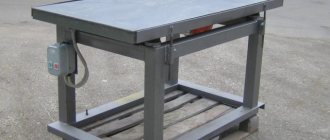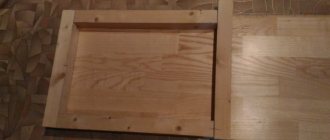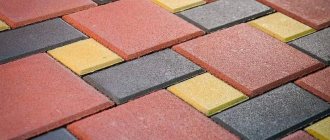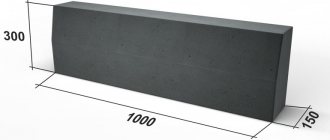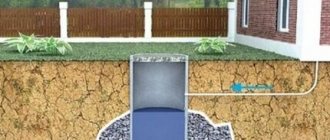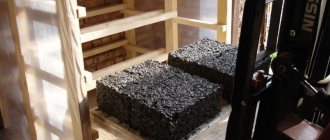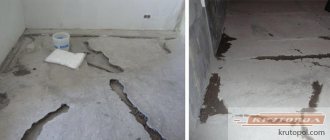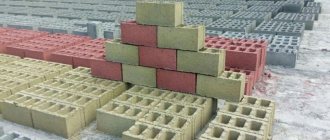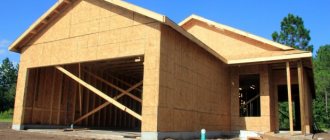Major brands that produce shaped paving elements (FEM is the professional name for paving slabs) use a forming and unmolding table to increase productivity and reduce manual labor. To produce a small amount of FEM, an individual developer only needs to make a molding vibrating table for paving slabs with his own hands from rolled metal or scrap materials (for example, used passenger car rubber).
What is the need for a homemade unit?
The device is quite lightweight, so the assembled homemade product can be transported from place to place, stored in the garage, and so on.
Professional construction teams come to sites with their own equipment. However, in times of crisis, people are increasingly deciding to build houses, outbuildings, bathhouses and other objects with their own hands. Making your own tools for this is doubly important if long-term work is planned. The savings will be significant.
You cannot do without a vibrating unit if you plan to pave the area with paving slabs. But in order to make one and a half to two dozen tiles, it’s not worth making a vibrating table, it won’t pay off.
Other possible uses of the device:
- Creation of blocks from foam concrete.
- Tamping cement.
- Manufacturing of monuments, window sills and eurofences.
- Compacting asphalt concrete mixtures.
- Carrying out various tests.
Design and principle of operation
A classic vibrating table is a flat plate mounted on a metal base using a movable joint. An electric motor with an eccentric is connected to it, which makes the structure tremble. To ensure that future concrete tiles are smooth and of high quality, the countertop is made perfectly smooth.
Expert opinion
Kulikov Vladimir Sergeevich
When assembling, choose materials with high resistance to dynamic and static loads, as well as vibration.
The unit is firmly fixed to the floor so that it does not move to the side due to vibration. The concrete mass is poured into containers and placed on the surface of the device. After turning on the electric motor, the structure begins to vibrate strongly. Vibrations cause the concrete to become compacted and air bubbles to escape. The paving slabs are monolithic and not weakened by voids.
After a few hours, the engine is stopped and the containers with concrete are removed. Drying takes place under natural conditions for 24 hours, then the finished products are removed from their molds. For this purpose, a formwork tool is used.
To prevent the concrete from “boiling” in the mold on the table, vibration should be of minimal amplitude. Otherwise, the effect will be the opposite: the mass will be saturated with air and become cellular. Tiles can be thrown away.
Drawing development
There are an excessive number of vibrating table drawings in the public domain that can be easily adapted to any external circumstances. Among the design recommendations, you should pay attention to the following details:
- Despite the fact that in most cases welding is used to connect the elements of the device, the most durable fastening is achieved using rivets.
- The stability of the table on an uneven surface and its height can be adjusted by supports on screw connections with legs.
- The manufactured concrete block press can later be used as a workbench or work table for installing any machines on it in a home workshop, so it is advisable to provide options for rigidly attaching the table top to a fixed support.
Since among the proposals there are tables of varying degrees of complexity, a novice master should focus on the simplest options. Combined units, including molding and demolding modes, as well as a sand sifter, are available to people with existing experience in such work.
List of materials and tools
To make a vibrating table, it is not necessary to have a well-equipped workshop.
A spacious garage with a workbench and a basic set of tools and materials is enough:
- Electric motor.
- Metal plate for work surface.
- Several steel plates.
- Metal pipes.
- Welding machine.
- Channel profile.
- Steel cups for springs.
- Springs made of steel (can be taken from a scooter or car, but cut in half).
- Bolts.
- Wrenches and screwdrivers.
- Bulgarian.
- Drill.
- Metal washer.
Electric motor question
You cannot install a powerful trolleybus motor or similar device. Vibration should be moderate. Choose a motor of medium power, for example, from a washing machine. Its main drawback is its short resource, but the vibrating table does not work all day long, so the engine from the SM will last for several years. To increase its service life, strengthen the bearings and place them instead of bushings.
The power of suitable motors starts from 250 W. Heavy countertops will require powerful electric motors. For example, a 3,000 W unit makes it possible to shake up to 300 kg of concrete mixture at a time. In terms of paving slabs 30x30 cm, this is approximately 4 m2 of finished products per 1 load.
You can purchase a ready-made motor, for example, IV-99, for 5-7 thousand. An option for those who need the power and durability of the unit.
Vibration electric motor for table
In order for the level and strength of vibration to be sufficient, motors with a power of one-half to one and a half kilowatt hours should be used. It needs to be unbalanced.
To do this, you need to put the pulleys on the motor shaft. A bolt needs to be inserted into one of its sides, thanks to which you can change the strength of the vibrations by adjusting the position of the bolt.
However, this is a trick; the manufacturer did not count on such bypasses of the system, which means this will primarily lead to wear and tear on the equipment. Under such heavy loads, the engine will not last long.
Classic version: manufacturing stages
You cannot make a unit by eye: it is unsafe and ineffective. On the Internet, find a drawing of a vibrating table of suitable dimensions. Start from the drawing, taking into account the characteristics of your materials and tools.
- Make a base from a corner, a channel also works well. Dimensions are set depending on the needs of the builder; the standard size is 70x70 cm. The area of the vibrating tabletop must correspond to the capabilities of the motor. Can be fastened with bolts or welding.
- Collect support. The pipes will serve as table legs; weld them to the base. To increase the stability of the structure, screw iron plates to the legs. They can then be fixed in concrete using anchors if the unit is intended to be used permanently. In the case of a portable table, stability depends on the rigidity of the floor and the material from which it is made. The height of the working surface is selected so that it is convenient for the master to work. The electric motor is installed on the platform at a distance of 15-20 cm from the working surface.
- Weld steel springs at the corners of the structure so that they support the work surface. Weld plates secured to an 8 mm metal sheet to the springs. If you make the base thinner than 8 mm, there is a high risk that the tabletop will bend under the weight of the concrete forms.
- Attach the electric motor to a square welded on springs across the structure. Make an eccentric from a metal washer attached to the motor shaft. It is he who will provide vibration with the required amplitude. On the side of the eccentric, make a hole with a figure-eight thread. By screwing a bolt into this hole, you can adjust the vibration amplitude of the device. Fix the bolt in the desired position with a control nut.
Expert opinion
Kulikov Vladimir Sergeevich
The table should vibrate, not the motor. The electric motor must be firmly fixed to the stand, otherwise the duckweed will quickly render it unusable and the effectiveness of the vibrating table will decrease. To make the product last longer and work with it safer, strengthen the structure. Weld the channels crosswise on the sides, making sure that the springs are installed as rigidly as possible.
Unmolding option
Removing finished tiles can be a bit of a challenge. To speed up the process, cut a rectangular hole at the end of the work surface to the size of the future tiles. The form is placed on top of it, the motor is turned on, and due to vibration, the tile falls out of the formwork. Place elastic material under the hole to prevent the product from breaking. To be able to work with such a device, the concrete containers must have handles that can be used to support the containers on the edges of the table.
Structural features of the vibrating table
The tile machine includes 4 key components:
- The supporting frame is a fixed frame welded from a metal angle or professional pipe, with diagonal fastenings to give it weight and strength. Mass is necessary for greater stability and protection from vibration damage. The presence of jibs and stiffening ribs will ensure long-term use of the unit.
- The tabletop is a movable part made of steel sheet with a thickness of 5 mm and having a protective edge around the entire perimeter. As a basis for the vibrating platform, it is possible to use both multilayer plywood and chipboards with a metal frame, but this option will not be durable
- The shock-absorbing link is a system of steel springs between the tabletop and the frame, which enhances the vibration effect of the engine. The simplest way is to weld sections of pipes that will be used as seats onto the corners of the frames so that the spring extends onto them by 2-4 turns. Legs made from a round pipe, selected to size, will be ready-made guides.
- A vibration motor is an electrical device that drives a vibration platform. The shaft rotation frequency and the amplitude of oscillatory movements are the main parameters that affect the speed of work and the quality of the resulting product.
Alternative solution
The option described above is a full-fledged, reliable table that can work for hundreds of hours. But sometimes there is no time and money to make such a machine. There is a way to quickly assemble an improvised construction vibrator with your own hands.
A steel plate is fixed to the edge of a vertical surface (metal or wooden panel). The opposite end is wrapped with rags or other shock-absorbing material, after which the structure rests against the wall. A hammer drill is leaned against a steel plate; instead of a drill, a piece of pipe is installed in the chuck. The vibration from the switched-on hammer drill is transmitted to the working surface, so you can place containers with concrete.
Manually driven
The beauty of the concrete shaking machine is its automatic operation. But sometimes money is tight, there are no tools and materials, and there is no hammer drill. In this case, you can assemble a tolerable unit from scrap materials found in every garage.
You need a wooden board, slats, a hammer, nails and 2-3 car tires.
- Place slats around the perimeter of the shield so that the containers with concrete do not move.
- Place the tires one on top of the other, and place a shield on the top one.
- Place forms with concrete mixture on the shield.
- Tap the edge of the shield with a rubber hammer to create vibration.
Do you need to bother?
What kind of vibrating table do you use?
HomemadePurchased
If the manufacturing process seemed too complicated to you, let's touch on the issue of productivity and payback. A regular vibrating table allows you to make up to 60 square meters of tiles per day. This is enough not only for the construction of a private parking lot, but also for the production of paving slabs for sale.
If you do not shake the concrete, the tiles will become fragile and such products are not suitable for sale. If you buy an assembled device, it will be expensive and the return on investment will be lower.
Recommendations
Creating a vibrating table at home does not take as much effort as it might seem at first glance.
Household tools may well be enough to make a relatively easy vibrating table. All you need besides tools is a little experience and knowledge, as well as following instructions and safety precautions.
Remember that the required dimensions, as well as the characteristics of the vibrating table, depend on what materials you use. It is preferable to choose the highest quality, but within reason.
Rating of popular factory models
If you don’t have time for assembly, and factory quality and warranty come first, buy one of the popular models of vibrating tables. The average price of vibrating tables on Yandex Market is 20-25 thousand rubles. Small specimens are sold for 6-8 thousand, but their productivity is low, and they are designed for working with plaster.
VO-100 220V 220V
Dimensions: 1000x700x800 mm.
Weight: 155 kg.
Price: 27 755.
VO-60 220V 220V
Dimensions: 600x600x700 mm.
Weight: 105 kg.
Price: 21 475.
VO-50 42/380 V 42/380 V
Dimensions: 500x500x600 mm.
Weight: 90 kg.
Price: 18 576.
VS-180 42/380V 42/380V
Dimensions: 1000x500x800 mm.
Weight: 140 kg.
Price: 25 679.
VS-950 42/380V
Dimensions: 2000x1500x800 mm.
Weight: 600 kg.
Price: 79 769.
EV-342 3-380V
Dimensions: 980x480 mm.
Weight: 180 kg.
Price: 57 100.
Where to buy a vibrating table for the production of paving stones and paving slabs?
If you decide to purchase a vibrating table of horizontal or vertical vibration, we are ready to provide you with the necessary product with a guarantee of the optimal ratio of price, quality, reliability and balanced technical characteristics. The experience of production and operation of vibrating tables of the LOBAS production company dates back to 2005, and during this period our products have shown their best side and acquired a high reputation in the sales market. We assemble horizontal and vertical vibrating tables, as well as vibration tables of standard sizes and other vibration equipment to order, both for our own needs and for delivery to individuals and organizations.
The most commonly used models are vibration equipment designed for an operating voltage of 380 V, but at the customer’s request we can easily upgrade them to a household voltage of 220 V.
You can view the options for vibration equipment in the LOBAS company catalog.
To place an order, call 8 (800) 333-16-86, and our managers will advise you on all your questions. From us you can purchase high-tech equipment at a competitive price, taking into account all individual requirements.
Vibrocasting is a classic option for the production of concrete products, proven over decades. Not a single enterprise for the production of concrete products can do without the use of vibration casting technology, with the exception of factories operating on vibration pressing equipment. The use of domestically produced vibrating tables makes it possible to create concrete products of various shapes and sizes without losing performance indicators of quality in terms of strength and frost resistance.
